
Table of Contents
List of Tables
- Chapter 1
- Chapter 7
- Chapter 9
- Chapter 12
- Chapter 14
- Chapter 15
- Chapter 18
- Appendix C
- Appendix D
List of Illustrations
- Chapter 1
- Chapter 2
- Chapter 3
- Chapter 4
- Chapter 5
- Chapter 6
- Chapter 7
- Chapter 8
- Chapter 9
- Chapter 10
- Chapter 11
- Chapter 12
- Chapter 13
- Chapter 14
- Chapter 15
- Chapter 16
- Chapter 17
- Chapter 18
Guide
Pages
Machine Learning in the AWS Cloud
Add Intelligence to Applications with Amazon SageMaker and Amazon Rekognition
Abhishek Mishra

Copyright 2019 by John Wiley & Sons, Inc., Indianapolis, Indiana
Published simultaneously in Canada
ISBN: 978-1-119-55671-8
ISBN: 978-1-119-55673-2 (ebk.)
ISBN: 978-1-119-55672-5 (ebk.)
No part of this publication may be reproduced, stored in a retrieval system or transmitted in any form or by any means, electronic, mechanical, photocopying, recording, scanning or otherwise, except as permitted under Sections 107 or 108 of the 1976 United States Copyright Act, without either the prior written permission of the Publisher, or authorization through payment of the appropriate per-copy fee to the Copyright Clearance Center, 222 Rosewood Drive, Danvers, MA 01923, (978) 750-8400, fax (978) 646-8600. Requests to the Publisher for permission should be addressed to the Permissions Department, John Wiley & Sons, Inc., 111 River Street, Hoboken, NJ 07030, (201) 748-6011, fax (201) 748-6008, or online at http://www.wiley.com/go/permissions.
Limit of Liability/Disclaimer of Warranty: The publisher and the author make no representations or warranties with respect to the accuracy or completeness of the contents of this work and specifically disclaim all warranties, including without limitation warranties of fitness for a particular purpose. No warranty may be created or extended by sales or promotional materials. The advice and strategies contained herein may not be suitable for every situation. This work is sold with the understanding that the publisher is not engaged in rendering legal, accounting, or other professional services. If professional assistance is required, the services of a competent professional person should be sought. Neither the publisher nor the author shall be liable for damages arising herefrom. The fact that an organization or Web site is referred to in this work as a citation and/or a potential source of further information does not mean that the author or the publisher endorses the information the organization or Web site may provide or recommendations it may make. Further, readers should be aware that Internet Web sites listed in this work may have changed or disappeared between when this work was written and when it is read.
For general information on our other products and services or to obtain technical support, please contact our Customer Care Department within the U.S. at (877) 762-2974, outside the U.S. at (317) 572-3993 or fax (317) 572-4002.
Wiley publishes in a variety of print and electronic formats and by print-on-demand. Some material included with standard print versions of this book may not be included in e-books or in print-on-demand. If this book refers to media such as a CD or DVD that is not included in the version you purchased, you may download this material at http://booksupport.wiley.com. For more information about Wiley products, visit www.wiley.com.
Library of Congress Control Number: 2019940774
TRADEMARKS: Wiley, the Wiley logo, and the Sybex logo are trademarks or registered trademarks of John Wiley & Sons, Inc. and/or its affiliates, in the United States and other countries, and may not be used without written permission. Amazon SageMaker and Amazon Rekognition are registered trademarks of Amazon Technologies, Inc. All other trademarks are the property of their respective owners. John Wiley & Sons, Inc. is not associated with any product or vendor mentioned in this book.
To my wife Sonam, for her love and support through all the years we've been together.
To my daughter Elana, for bringing joy and happiness into our lives.
Abhishek
Acknowledgments
This book would not have been possible without the support of the team at Wiley, including Jim Minatel, Kenyon Brown, David Clark, Kim Cofer, and Pete Gaughan. I would also like to thank Chaim Krause for his keen eye for detail. It has been my privilege to work with all of you. Thank you.
About the Author
Abhishek Mishra has been active in the IT industry for over 19 years and has extensive experience with a wide range of programming languages, enterprise systems, service architectures, and platforms.
He holds a master's degree in computer science from the University of London and currently provides consultancy services to Lloyds Banking Group in London as a security and fraud solution architect. He is the author of several books, including Amazon Web Services for Mobile Developers.
About the Technical Editor
Chaim Krause is a lover of computers, electronics, animals, and electronic music. He's tickled pink when he can combine two or more in some project. He has come by the vast majority of his knowledge through independent learning. He jokes with everyone that the only difference between what he does at home and what he does at work is the logon he uses. As a lifelong learner he is often frustrated with technical errors in documentation that waste valuable time and cause unnecessary frustration. One of the reasons he works as the technical editor on books is to help others avoid those same pitfalls.
Introduction
Amazon Web Services (AWS) is one of the leading cloud-computing platforms in the industry today. At the time this book was written, AWS offered more than 100 services, each of which resided in one of 18 different service categories. For someone who is new to cloud computing or to the AWS ecosystem, the sheer number of services on offer can be daunting. It can be difficult to know where to begin and what services to focus on.
Developers who are new to machine learning as well as experienced data scientists are often not aware of the power of the public cloud and AWS's offerings in the machine learning space in particular. In the past, cloud-based machine learning offerings have been limited in the types of algorithms they could support and the level of customization that was possible. All of this changed when Amazon announced SageMakera service that provided the ability to build machine learning models based on Amazon's implementation of cutting-edge algorithms, as well as the option to build custom models with frameworks such as Scikit-learn and Google TensorFlow.
Real-world use cases of cloud-based machine learning models are not based on using the model in isolation, but instead rely on a number of supporting systems such as databases, load balancers, API gateways, and identity providers, all of which are provided by AWS. This book is written to provide both seasoned machine learning experts and enthusiasts alike an introduction to a selection of AWS machine learning services that are based on pre-trained models, as well as step-by-step examples of how to train and deploy your own custom models on Amazon SageMaker. For enthusiasts who are new to machine learning, this book also provides a selection of chapters that cover the fundamentals of machine learning such as data preprocessing, visualization, feature engineering, and the use of common Python libraries such as NumPy, Pandas, and Scikit-learn.
Next page
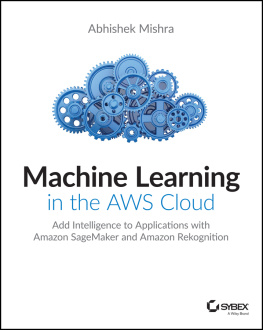
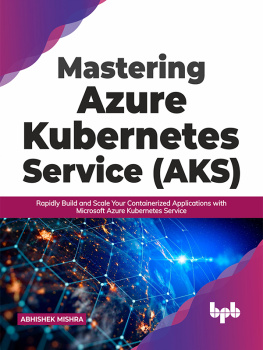


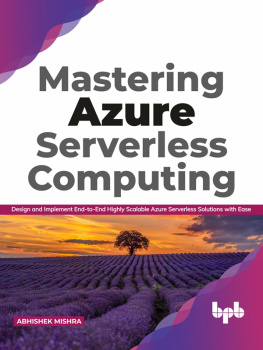



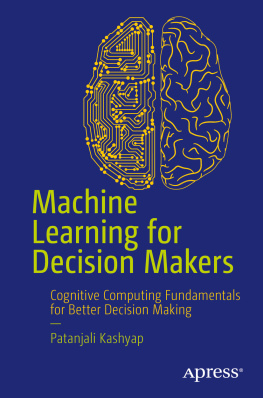
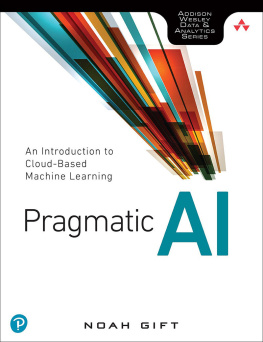
![Mark Wickham [Mark Wickham] - Practical Java Machine Learning: Projects with Google Cloud Platform and Amazon Web Services](/uploads/posts/book/119359/thumbs/mark-wickham-mark-wickham-practical-java.jpg)


